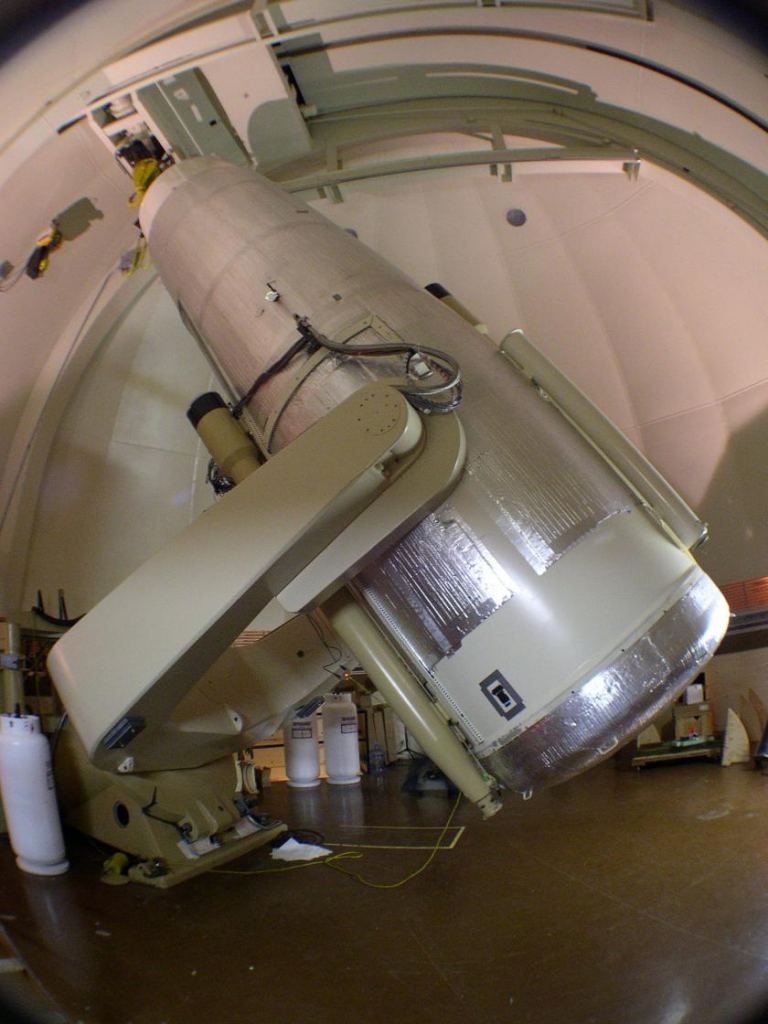Astronomers at Caltech's Zwicky Transient Facility (ZTF) have discovered an asteroid that orbits inside Venus. Though other asteroids have a portion of their orbit inside Venus', this is the first one with an orbit that is completely inside Venus' orbit. The new object is named 2020 AV2.
2020 AV2 is a member of a small class of asteroids called Atiras, objects with orbits inside Earth's. There are only 21 of them confirmed as of now. They're also called Interior-Earth Objects (IEOs) because they orbit inside Earth. 2020 AV2 is the first "Vatira" asteroid, where the V stands for Venus.
The asteroid was discovered as part of the ZTF's Twilight Program. It was first flagged as a candidate on January 4th, 2020, and designated ZTF09k5. After that, an alert was sent out by the Minor Planet Center. After that, other telescopes around the world followed up on the asteroid. That helped confirm the asteroid 's orbit and its size.
2020AV2 is about 1 to 3 kilometers in diameter and has an elongated orbit tilted about 15 degrees relative to the plane of our solar system. Its orbit is 151 days long, and its always inside the orbit of Venus. At its perihelion, it comes very close to the orbit of Mercury.
But how did it get there?
"An encounter with a planet probably flung the asteroid into Venus's orbit." Tom Prince, Professor Physics, Caltech
Tom Prince is a Professor of Physics at Caltech, and a co-investigator of ZTF. In a press release Prince said, "An encounter with a planet probably flung the asteroid into Venus's orbit. It's the opposite of what happens when a space mission swings by a planet for a gravity boost. Instead of gaining energy from a planet, it loses it."
"Getting past the orbit of Venus must have been challenging." George Helou, Executive Director, Caltech Astronomy Center
George Helou is the executive director of the IPAC astronomy center at Caltech and a ZTF co-investigator. In a press release, Helou said, "Getting past the orbit of Venus must have been challenging. The only way it will ever get out of its orbit is if it gets flung out via a gravitational encounter with Mercury or Venus, but more likely it will end up crashing on one of those two planets."
Vatiras are only visible at dusk and dawn, much like Venus, because both are so close to the Sun. The telescope at Zwicky if suited to find objects like this because it scans the sky so quickly. That helped it find 2020 AV2 because the asteroid makes only brief appearances.
As of right now, 2020 AV2 is the only Vatira asteroid that we know of. But nobody really knows how many more there might be. For the team at ZTF, the prospect of finding more is attractive. "We have no idea how many more there are like this or if it's unique," said Helou. When the Vera Rubin Observatory (VRO) comes online later this year, it will likely find others, if they're there.
The Atira asteroids, 2020 AV2, the first Vatira, are not a threat to strike Earth. Their orbits don't cross Earth's. But it's possible that their orbits could change due to gravitational interactions with Venus or Mercury.
 Universe Today
Universe Today

